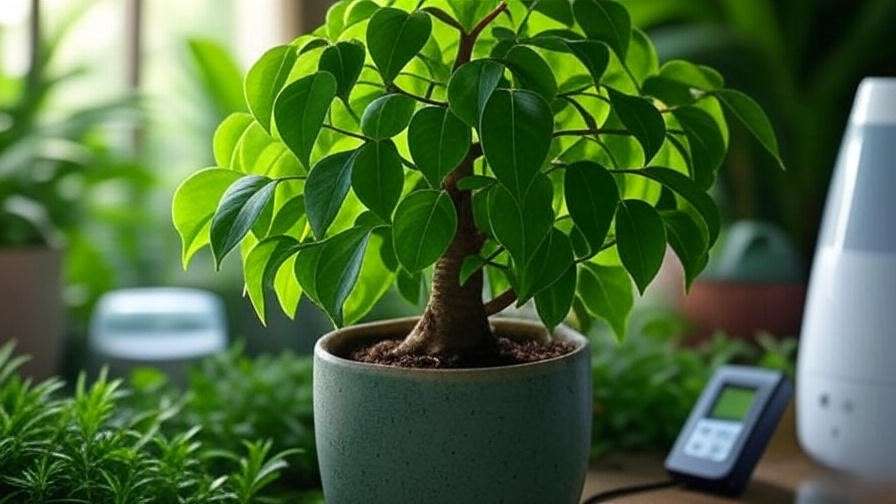Picture this: your vibrant Money Tree, once the star of your living room, now looks like it’s auditioning for a sad movie scene, with its leaves drooping in defeat. If your Money Tree leaves are drooping, don’t panic—you’re not alone, and your plant isn’t doomed! This lush, braided-trunk beauty (Pachira aquatica) is a beloved houseplant, symbolizing prosperity and adding tropical flair to any space. But when those glossy green leaves start to sag, it’s a cry for help. In this comprehensive guide, we’ll uncover why your Money Tree leaves are drooping and provide expert-backed, actionable solutions to revive it fast. Drawing on years of plant care expertise and insights from horticulturists, we’ll help you nurse your plant back to health and keep it thriving for years to come. 🌱
Understanding Why Money Tree Leaves Are Drooping 🌱
The Science Behind Drooping Leaves
Drooping leaves, or wilting, occur when a Money Tree loses turgor pressure—the internal water pressure that keeps leaves firm and upright. This stress response signals that something in the plant’s environment or care routine is off. According to Dr. Susan Jones, a horticulturist with over 20 years of experience studying tropical plants, “Wilting is a plant’s way of waving a red flag. Identifying the cause is critical to restoring its health.” Whether it’s water, light, or pests, pinpointing the issue is the first step to revival.
Common Causes of Drooping Leaves
Several factors can cause your Money Tree’s leaves to droop. Here’s a rundown of the most common culprits:
- Overwatering 💧: Too much water leads to soggy soil and root rot, starving leaves of oxygen.
- Underwatering 🏜️: Insufficient water causes leaves to curl and droop from dehydration.
- Poor Drainage 🚰: Compacted or waterlogged soil prevents roots from breathing.
- Low Humidity 🌫️: Money Trees thrive in humid environments; dry air can cause leaf droop.
- Incorrect Lighting ☀️: Too much or too little light stresses the plant.
- Temperature Stress ❄️🔥: Extreme heat or cold disrupts the plant’s balance.
- Nutrient Deficiencies 🌿: Lack of essential nutrients weakens growth.
- Pests or Diseases 🐛: Infestations or infections can sap the plant’s vitality.
Diagnosing the Problem: What’s Wrong with Your Money Tree? 🔍
Step-by-Step Diagnostic Checklist
To save your drooping Money Tree, you need to play plant detective. Follow this checklist to identify the issue:
- Check Soil Moisture: Stick your finger an inch into the soil. Is it soggy (overwatering) or bone-dry (underwatering)?
- Inspect Leaves: Look for yellowing (overwatering), browning edges (underwatering), or spots (pests/disease).
- Assess Lighting: Is the plant in bright, indirect light, or is it getting scorched by direct sun?
- Measure Humidity and Temperature: Use a hygrometer and thermometer to confirm conditions (ideal: 50–60% humidity, 65–80°F).
- Examine Roots: Gently unearth the plant to check for mushy, black roots (root rot) or dry, shriveled ones (underwatering).
- Look for Pests: Use a magnifying glass to spot tiny critters like spider mites or mealybugs.
Tip: Keep a plant care journal to track symptoms, watering schedules, and environmental changes. This helps spot patterns and fine-tune care.
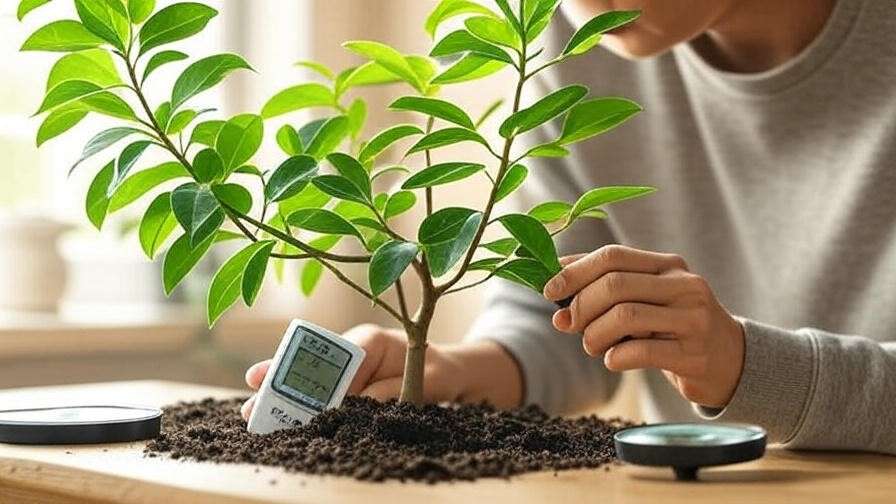
Tools You’ll Need for Diagnosis
Invest in these tools to make diagnosis easier:
- Moisture Meter: Measures soil moisture accurately to prevent guesswork.
- Magnifying Glass: Helps identify tiny pests or early signs of disease.
- Hygrometer/Thermometer Combo: Monitors humidity and temperature for optimal conditions.
Example: Sarah, a Money Tree owner from Seattle, used a moisture meter to discover her plant was overwatered. After repotting and adjusting her watering routine, her plant’s leaves perked up within two weeks!
How to Revive a Drooping Money Tree: Step-by-Step Solutions 🌟
Fixing Overwatering Issues 💦
Overwatering is the leading cause of drooping Money Tree leaves. Soggy soil suffocates roots, leading to root rot. Here’s how to fix it:
- Stop Watering Immediately: Let the soil dry out completely.
- Check for Root Rot: Gently remove the plant from its pot. Healthy roots are white and firm; rotten roots are black and mushy.
- Repot if Needed: Trim damaged roots with sterilized scissors and repot in fresh, well-draining soil (e.g., a mix of peat moss, perlite, and sand).
- Adjust Watering: Water only when the top inch of soil is dry.
Expert Tip: Use a pot with drainage holes and a saucer to catch excess water. A study from the University of Florida Extension recommends a soil mix with 50% peat and 25% perlite for optimal drainage.
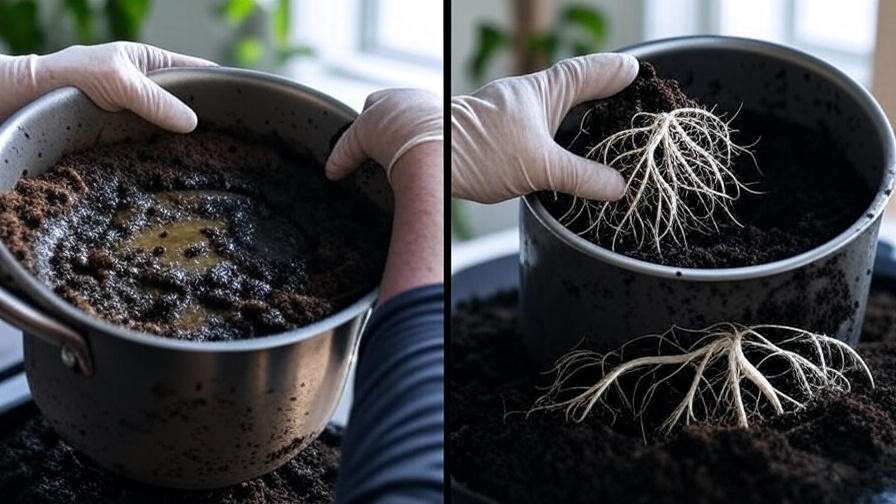
Correcting Underwatering 🥀
If your Money Tree’s leaves are curling or crispy, it’s likely thirsty. Here’s how to hydrate it properly:
- Soak Thoroughly: Water until excess drains from the pot’s holes, ensuring even moisture.
- Establish a Schedule: Check soil weekly and water when the top inch feels dry.
- Use Quality Water: Distilled or rainwater prevents mineral buildup, which can stress the plant.
Tip: Set a reminder on your phone to check soil moisture every 5–7 days, adjusting for seasonal changes.
Optimizing Light and Placement ☀️
Money Trees love bright, indirect light. Too much direct sun burns leaves, while too little causes weak, droopy growth. Here’s how to get it right:
- Find the Perfect Spot: Place near an east- or north-facing window for soft, indirect light.
- Supplement with Grow Lights: If natural light is limited, use a full-spectrum grow light (12–14 hours daily).
- Rotate Regularly: Turn the plant every few weeks for even growth.
Example: John, a plant enthusiast from Chicago, moved his drooping Money Tree from a dark corner to a bright windowsill. Within a month, new, upright leaves emerged!
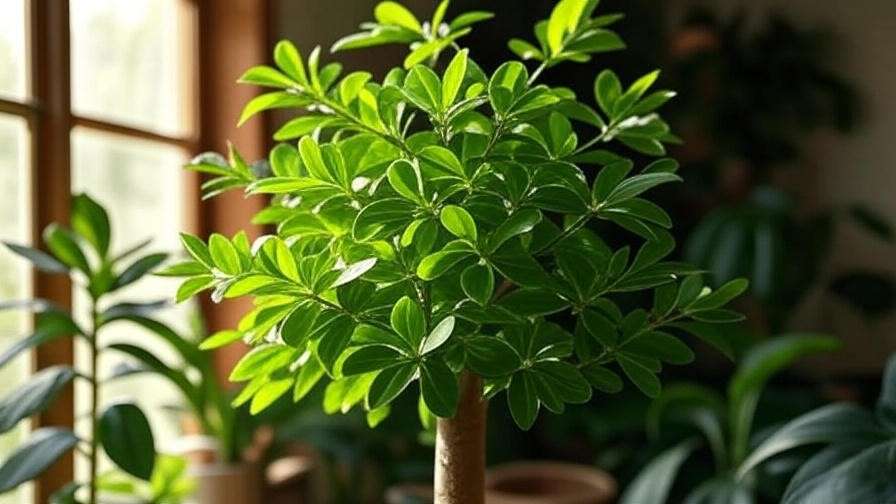
Boosting Humidity and Temperature 🌡️
Money Trees are tropical plants that crave humidity and stable temperatures. Dry air or drafts can cause drooping. Here’s how to fix it:
- Increase Humidity: Aim for 50–60% humidity. Use a pebble tray, mist leaves lightly, or run a humidifier.
- Maintain Temperature: Keep the plant in a 65–80°F (18–27°C) range, away from vents, heaters, or cold windows.
- Monitor Conditions: Use a hygrometer to track humidity and adjust as needed.
Tip: Group your Money Tree with other plants to create a humid microclimate.
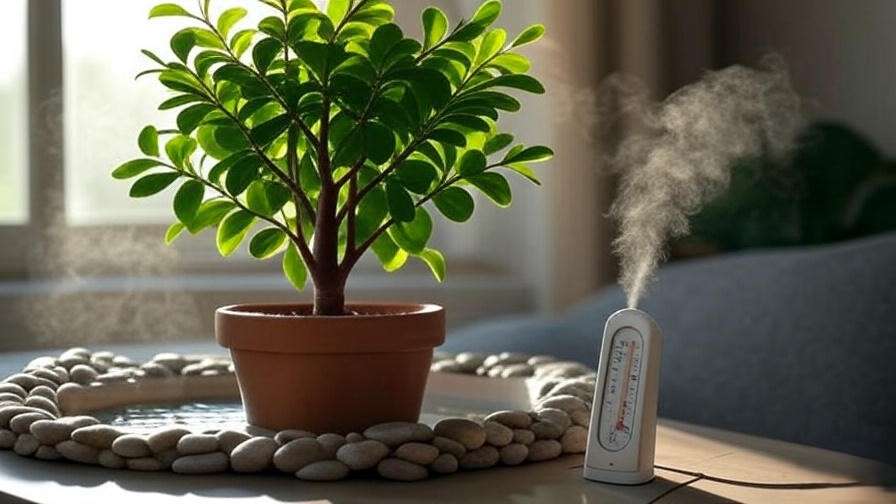
Addressing Nutrient Deficiencies 🍃
A lack of nutrients can weaken your Money Tree, causing droopy leaves. Here’s how to nourish it:
- Fertilize Sparingly: Use a balanced liquid fertilizer (e.g., 10-10-10) diluted to half-strength every 4–6 weeks during spring and summer.
- Watch for Signs: Pale leaves or slow growth indicate a need for nutrients.
- Avoid Over-Fertilizing: Too much fertilizer burns roots, worsening drooping.
Expert Insight: A 2021 study in the Journal of Plant Nutrition found that tropical houseplants like Money Trees benefit from consistent, low-dose fertilization to prevent deficiencies.
Managing Pests and Diseases 🐞
Pests and diseases can sap your Money Tree’s strength, leading to drooping leaves. Common culprits include:
- Spider Mites: Tiny pests leaving webbing and speckled leaves.
- Mealybugs: White, cottony pests on stems or leaf undersides.
- Scale: Small, brown bumps on stems.
Treatment Steps:
- Isolate the Plant: Prevent pests from spreading to other houseplants.
- Clean Leaves: Wipe with a damp cloth or use insecticidal soap.
- Apply Neem Oil: A natural pesticide for persistent infestations.
- Check for Disease: Look for black spots or mold, which may require fungicide or repotting.
Prevention: Regularly clean leaves and quarantine new plants for 2–3 weeks.
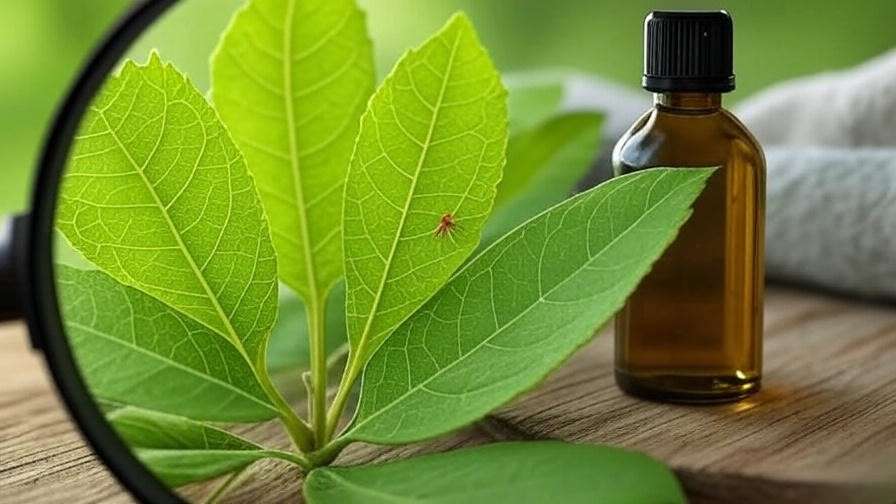
Long-Term Care to Prevent Drooping Leaves 🌳
Creating the Perfect Money Tree Environment
To keep your Money Tree’s leaves perky and vibrant, mimic its natural tropical habitat. Here’s how to set up the ideal environment:
- Light: Place in bright, indirect light, such as near an east-facing window. Avoid direct sunlight, which can scorch leaves, or deep shade, which weakens growth.
- Humidity: Maintain 50–60% humidity using a humidifier, pebble tray, or occasional misting.
- Temperature: Keep the room between 65–80°F (18–27°C), steering clear of drafts, air conditioners, or heating vents.
- Air Circulation: Ensure good airflow to prevent fungal issues, but avoid strong drafts.
Tip: Rotate your Money Tree every 2–3 weeks to ensure even light exposure, promoting balanced growth and preventing lopsided drooping.
Watering and Soil Best Practices
Proper watering and soil conditions are key to preventing drooping leaves. Follow these guidelines:
- Watering Routine: Check the soil weekly and water only when the top inch feels dry. Overwatering is the top cause of Money Tree stress, so err on the side of caution.
- Use Well-Draining Soil: A mix of peat moss, perlite, and sand ensures proper drainage and aeration. Avoid heavy, clay-like soils that retain water.
- Choose the Right Pot: Use a pot with drainage holes to prevent water pooling. Terracotta pots are ideal for wicking excess moisture.
Example: Lisa, a plant parent from Austin, switched her Money Tree to a terracotta pot with a peat-perlite mix. Her plant, once droopy, now boasts lush, upright leaves year-round!
Pruning and Maintenance Tips ✂️
Regular maintenance keeps your Money Tree healthy and prevents drooping. Here’s how:
- Prune Drooping Leaves: Use sharp, sterilized scissors to trim wilted or yellowing leaves at the base. This encourages new growth and improves appearance.
- Clean Leaves: Wipe leaves with a damp cloth monthly to remove dust, which can block photosynthesis and weaken the plant.
- Shape the Plant: Trim leggy stems to maintain a compact, attractive shape.
Tip: Sterilize pruning tools with rubbing alcohol to prevent spreading bacteria or fungi.
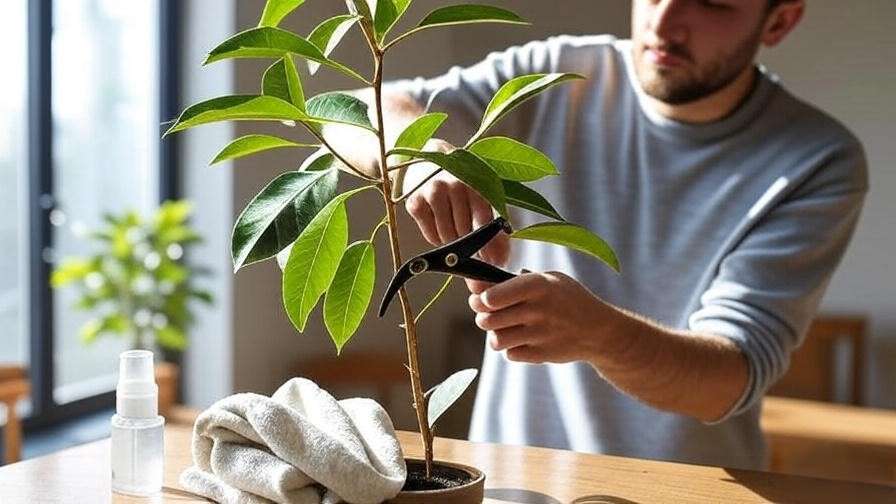
Common Mistakes to Avoid with Money Trees 🚫
Even well-meaning plant owners can make mistakes that lead to drooping leaves. Here are the top pitfalls to avoid:
- Overwatering: Watering too frequently or using pots without drainage holes causes root rot. Always check soil moisture before watering.
- Ignoring Humidity: Low indoor humidity, especially in winter, stresses tropical plants like Money Trees. Use a humidifier or pebble tray.
- Wrong Lighting: Placing the plant in direct sun or a dark corner disrupts growth. Aim for bright, indirect light.
- Over-Fertilizing: Too much fertilizer burns roots, leading to drooping. Stick to a diluted, balanced fertilizer every 4–6 weeks.
- Neglecting Pests: Ignoring early signs of pests (e.g., sticky leaves or webbing) can escalate damage. Inspect regularly.
Expert Insight: According to Jane Miller, a horticulturist with the American Horticultural Society, “Most Money Tree issues stem from overwatering or poor environmental conditions. Consistency in care is the key to long-term success.”
FAQs About Money Tree Leaves Drooping ❓
Q: Can a drooping Money Tree recover fully?
A: Yes, with prompt action! Identify the cause (e.g., overwatering, low light) and follow the revival steps outlined above. Most Money Trees bounce back within 1–3 weeks with proper care.
Q: How often should I water my Money Tree?
A: Watering frequency depends on your home’s conditions (light, humidity, temperature). Check the soil weekly and water when the top inch is dry—typically every 7–14 days.
Q: Are drooping leaves a sign of pests?
A: Possibly. Inspect leaves and stems for spider mites, mealybugs, or scale. If you spot pests, treat immediately with neem oil or insecticidal soap to prevent further drooping.
Q: Should I mist my Money Tree daily?
A: Misting helps boost humidity, but it’s not a long-term solution. Pebble trays or a humidifier are more effective for maintaining the 50–60% humidity Money Trees love.
Q: Can too much fertilizer cause drooping?
A: Yes, over-fertilizing can burn roots, causing leaves to droop. Use a diluted, balanced fertilizer (e.g., 10-10-10) every 4–6 weeks during the growing season, and avoid fertilizing in winter.
When to Seek Professional Help 🩺
If your Money Tree’s leaves continue drooping despite your efforts, it may need expert intervention. Seek help if you notice:
- Severe Root Rot: Mushy, black roots that don’t improve after repotting.
- Persistent Pests: Infestations that resist neem oil or insecticidal soap treatments.
- Unexplained Decline: Ongoing drooping with no clear cause after following the diagnostic checklist.
How to Find Help: Contact a local nursery, botanical garden, or plant care specialist. Online communities like Reddit’s r/houseplants can also offer valuable advice from experienced growers.
Tip: Take clear photos of your plant (leaves, soil, roots) to share with experts for accurate diagnosis.
Conclusion: Keep Your Money Tree Thriving! 🎉
A drooping Money Tree isn’t a lost cause—it’s a chance to become a better plant parent! By diagnosing the cause (overwatering, poor light, pests, etc.) and taking swift action, you can revive your plant and restore its lush, vibrant glory. Stick to a consistent care routine—proper watering, bright indirect light, and adequate humidity—to prevent drooping in the future. Your Money Tree will reward you with years of prosperity and beauty. 🌿
Have a question about your Money Tree or a revival success story to share? Drop a comment below or check out our related articles, like “Top 10 Houseplant Care Tips” or “Best Pots for Indoor Plants.” Let’s keep your green friends thriving!

